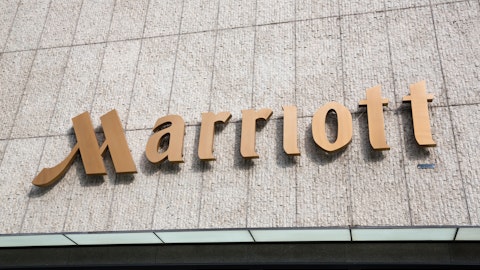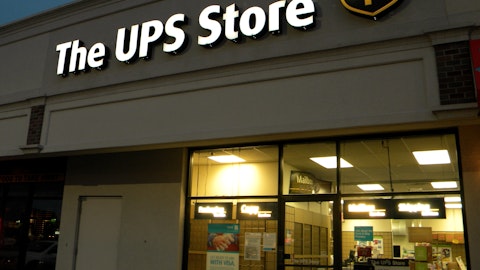I think that has been a bit more streamlined and more consistent with [indiscernible], but we are always going to offer, always aspire to offer a better value than they can in our organic channels. In regards to your second question, in our approved operations and improved staffing, yes, our goal would be to service all of our transactions with our organic drivers. That being said, there are different situations and different markets that still require a pretty heavy usage of DoorDash Drive. If you think about, particularly on the West Coast where the cost of labor and the accessibility of labor has been really challenged, we find our franchisees out there are leaning more heavily on DoorDash Drive and the markets where we have been able to staff up the markets where we have been able to productively leverage our own labor, you see lower rates.
So, I don’t see DoorDash Drive ever going away, I think it, labor on demand is a great asset that we’ve leveraged for a long time, but optimally we would be able to leverage our organic drivers to a larger extent moving forward.
Sara Senatore: And I guess just to your point, online versus offline just it sounds like when I talk about online, kind of an aggregator, you can see literally on the same screen, but it sounds like there isn’t that much distinction anymore between, how competition works there versus to your point, people who are looking at your proprietary ordering and maybe in isolation versus comparing you directly to competition, the same sort of advantages prevail on the aggregators as they do elsewhere?
Rob Lynch: Yes, I would tell you that like the shopping behavior is pretty similar, obviously by definition aggregator mean obviously they’re aggregating all of them into one site, but even on the organic channels, I mean, they’re still shopping multiple sites. So, it’s just as easy to have four apps side by side, little Caesar’s, Papa John’s, Pizza Hutt, and Domino’s sitting there on your phone as it is to go on DoorDash and see them all stacked up inside their platform. So, I think that competitive shopping dynamic that exists in both of those channels.
Operator: One moment for our next question. Our next question will come from Chris O’Cull of Stifel. Your line is open.
Chris O’Cull: Rob, I know you’ve said in the past that much of the transaction growth from the pandemic period came from capturing incremental customers, and that average frequency hadn’t changed much over that period. So, I’m just curious with some of the operational changes that you’ve made, particularly in company stores whether you’re making any progress on increasing average frequency among your existing customers?
Rob Lynch: Yes, I mean, that is absolutely the long-term goal, right? So as we continue to improve service levels, we will create more loyalty and therefore more frequency. So, as we called out earlier, one of the things we’re really proud of is that we were just recognized by the SCI as number one in service in this industry, which is a huge external validation of all the back to better work that we’re doing. I mean, fundamentally, I believe that this business and all restaurant businesses are live and die with operations. If you can’t deliver a great customer experience, it doesn’t matter how fancy your product innovation is or how fancy your marketing is. And that’s what we’ve been focused on really for the last year, year and a half.
I mean, during the pandemic it was all about keeping, just keeping the stores open, keeping people safe, and everyone was scrambling to try and make sure that we were doing that the staffing challenges that everyone has talked incessantly about. Now, as we come out of the pandemic and staffing improves and we had to clean up some things. We had lost some discipline and now we have re-instituted that discipline. We’ve got great operations, leadership that’s driving the kind of behaviors that we want. And so, yes, I mean, our goal long-term is to significantly increase frequency. We think it’s a huge untapped or a huge opportunity for our business, and we will continue to kind of share out with you, as we make more progress there, how that’s transpiring.
Today, we’re still in the early throes of that, so we’re not necessarily sharing that data, but moving forward, we’ll be able to talk more about how frequency evolves as our operations improve.
Operator: One moment for our next question. Our next question comes from Eric Gonzalez of KeyBanc. Your line is open, Eric.





